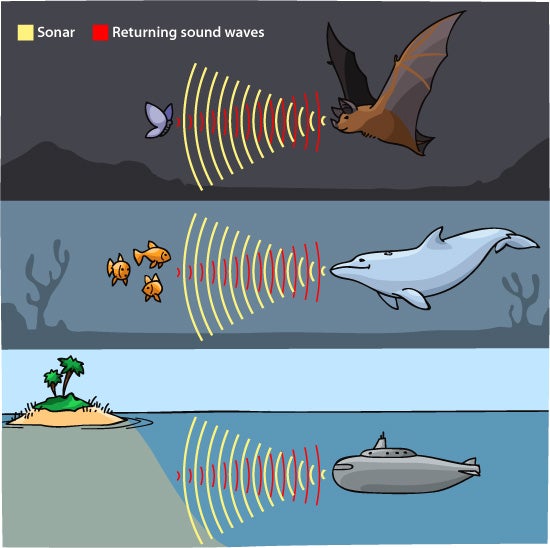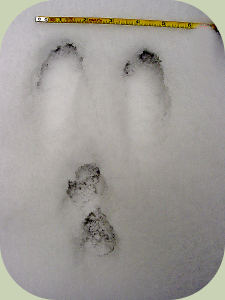Exodus 10:21-23
King James Version (KJV)
21 And the Lord said unto Moses, Stretch out thine hand toward heaven, that there may be darkness over the land of Egypt, even darkness which may be felt.22 And Moses stretched forth his hand toward heaven; and there was a thick darkness in all the land of Egypt three days:23 They saw not one another, neither rose any from his place for three days: but all the children of Israel had light in their dwellings.
Even now, on a moonless night, there are still often stars to cast a faint glow. Rarely, since Moses shared the plague of Darkness The Lord sent over the land of Egypt, have we had nights of total darkness. They eyes are all but useless in these situations, but there are other ways to 'see' your way.
Some animals find their way through their dark burrows by their sense of touch. Some others are able to whiz at top speed between invisible walls without even brushing them lightly. Tiny mammals with wings of thin, crepe-like skin live in the inky regions of large natural caverns. They come to the surface to find food, dashing along without touching walls or bumping into each other.
G.W. Pierce of Harvard developed a device that could pick up sounds higher in pitch than the human ear can hear. It was discovered that bats raised loud, shrill cries, as often as 30 or more times every second. These sounds bounced from everything near them, 'showing' them the location of each object. The bats' ears were able to pick up these echoes and measure the distances accordingly, avoiding the objects. This is known as echolocation.
Echolocation: Echolocation, the process of determining the distance and direction of objects by using sound. This article is concerned with echolocation as used by animals
Listen to the sound of a bat here, and the WERC site on Bat Vocalization here, with more sound files.

Bats in North America are insect eaters, while those in the tropics are mostly fruit eaters. The fruit-eating species are often larger, and may be called flying foxes because of their size.
The flying mammals in North America are divided into 2 groups, cave bats and tree bats. The cave bats hibernate through winter, while the tree bats usually migrate.



The bones at the tips of the front limbs are the toe bones in most mammals, but in bats, these are very fine and light. They are longer than most of their other bones. The wings extend between these long, fine bones and long the body to the hind legs. The soft skin stretches between the hind legs and is joined to the tail, as well. There is one claw on the outer bend of each wing. The hind feet have 5 claws each.
A bat does not prepare a nest as other mammals do. She hangs by her wings, the tail membrane preventing the newborn from falling. The newborn batling climbs upward and nurses contently for several days. When the mother flies off in search of food, the young batling stays with her.
Next to rodents, bats are the mammal order with the largest number of species., with 180 species in North America alone.
image via National Park Service website
image via Interstate Termite website
Six species of bats belong to the free-tailed group living in the U.S. Bats in this group have tail membranes that extend only partway along the tail. The naked tip of the tail is free for perhaps a full inch. The southwestern U.S. has more free-tailed species than any other kind. Carlsbad Caverns in southeast New Mexico is the home to millions of free-tailed bats. During the day, a huge natural room in the Caverns, 1/2 mile long and over 100 ft high is hung full of myriads of these tiny creatures. At dusk, they awaken and fly off in a low roaring rush, to search out food. It is estimated that they exit the Caverns at the rate of 300 bats per second!
In the caves where the bats live their droppings form a rich fertilizer known as guano. The Carlsbad Caverns yielded 50-100 tons of guano per day, 6 months out of the year for 15 years. When the fertilizer companies had dug up and hauled away all the deposits, it was discovered that the guano was littered with the remains of billions upon billions of insects. The Carlsbad Caverns is only one bat roost in thousands. Imagine all the insects we'd still have if bats didn't exist?
Some Links:
How Stuff Works...Bats and Echolocation
Bats from Hands of a Child
Nocturnal Animals lapbook from Homeschool Share
Illinois Dept. of Education Bat unit lesson plans
nice Squidoo page on Little Brown Bats









